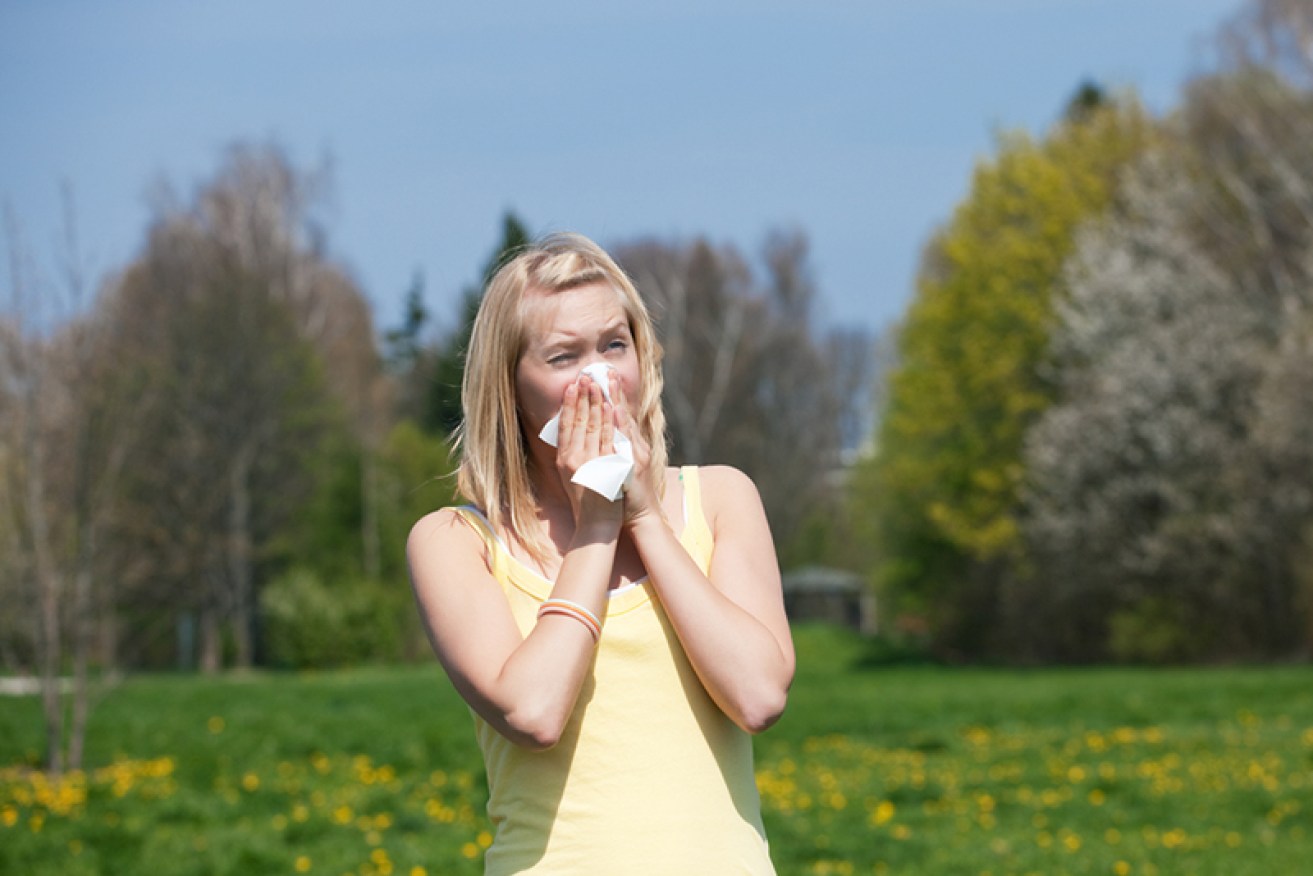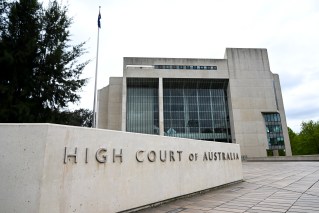Protect yourself from thunderstorm asthma this grass pollen season


Hay fever sufferers are being urged to check in with their GP or pharmacist to prepare for the pollen season.
Hay fever sufferers are being urged to prepare early for the pollen season as hospitals face increased demand due to COVID-19.
Grass pollen season, which typically runs from the start of October until the end of December, brings an increase in asthma, hay fever (allergic rhinitis) and the chance of thunderstorm asthma.
Victoria’s deputy chief health officer Dr Angie Bone encouraged people to get on top of their asthma action plans.
“It’s important for anyone who has or has ever had asthma, or spring hay fever, or who might sneeze or wheeze during pollen season, to talk to their GP or pharmacist now about what they can do to protect themselves,” she said.
Dr Bone said plans should be reviewed each year for adults or every six months for children.
In a statement, the Victorian Department of Health said people with asthma should carry their asthma preventer and reliever puffer, and know what to do if they have an asthma attack.

People with asthma should carry their asthma preventer and reliever puffer. Photo: AAP
‘‘People with spring hay fever should know what asthma symptoms are and learn the four steps of asthma first aid,’’ the statement said.
‘‘Asthma reliever medication can be purchased from a pharmacy, if required, without a prescription.
“Having good control of your asthma or hay fever during grass pollen season will help avoid any confusion with COVID-19 infection, as symptoms of asthma, hay fever and COVID-19 can be similar.
‘‘People should test for COVID-19 if their symptoms are new, different than usual, have restarted after a period of absence, or if they are unsure.
“We know our hospitals are currently experiencing increased demand due to COVID-19 and other illnesses, so it’s important people at risk take steps to protect themselves and those in their care ahead of time,” Dr Bone said.
A NSW Health spokesperson said that although thunderstorm asthma events are rare in New South Wales, they are an important reminder that asthma can be a serious condition.
“In NSW the period from October to November is a time of higher risk of thunderstorm asthma because there are higher pollen levels that may coincide with thunderstorms,” they said.
“Each year, approximately 10,000 people are admitted to NSW hospitals for treatment of asthma. Around one in nine adults and one in eight children has asthma in NSW.
“It is important that people with asthma have an up-to-date asthma action plan. Those who wheeze and sneeze in spring check with their doctor to see if they may actually have asthma.”
Asthma Australia reported that last season’s grass pollen levels in Brisbane and Canberra ‘‘smashed records’’, with some describing it as the worst pollen season on record, causing widespread discomfort for hay fever sufferers.
The record pollen levels in Brisbane were attributed to a combination of high rainfall, grass growth and higher-than-average temperatures.
During the same period, Canberra’s pollen readings were the highest in more than 10 years of research.
Generally, wetter conditions lead to more grass growth than drier conditions and the production of more grass pollen when those grasses flower.
The current Indian Ocean dipole and BoM’s forecast of a 70 per cent chance of another La Niña season suggests that above median September-to-November rainfall is likely for most of the eastern half of Australia.
Associate Professor Ed Newbigin from the University of Melbourne says that heavy spring rains associated with a La Niña could cause conditions that exacerbate the hay fever season.
‘‘If we do get lots of spring rain, then it could certainly give us better conditions for grass growth and that’s going to lead to more grass pollen that will adversely affect people who have got allergies,’’ he said.
A recent study on the impact of hay fever in children aged six to 15 revealed that the condition affected many areas of day-to-day living, including emotional wellbeing, physical health, school and sleep.
What is thunderstorm asthma?
According to the Better Health Channel, thunderstorm asthma is thought to be triggered by a unique combination of high amounts of grass pollen in the air and a certain type of thunderstorm.
For people who have asthma or hay fever this can trigger severe asthma symptoms.
In November 2016, 10 Victorians died and thousands were affected by the world’s worst outbreak of thunderstorm asthma.
The severity of that event caught many Victorians off guard, including emergency responders.
Asthma first aid
- Sit the person upright
- Give four separate puffs of reliever puff
- Shake puffer
- Put one puff into spacer
- Take four breaths from spacer
- Repeat until four puffs have been taken
- Wait four minutes. If no improvement, repeat four puffs as above
Still no improvement? Call an ambulance and repeat four puffs every four minutes until help arrives.
Online resources
VicEmergency website: emergency.vic.gov.au, or download the VicEmergency app.
This general alert system forecasts thunderstorm asthma risk levels during the pollen season from October to December.
It analyses pollen counts, weather conditions and hospital presentations to predict risk levels.
Pollen count alerts in capital cities
asthmaaustralia.org.au/sa/about-asthma/manage-your-asthma/triggers/adelaide-pollen-count (Adelaide)
airrater.org (Tasmania)
Or call: 1800 ASTHMA Helpline (1800 278 462).








